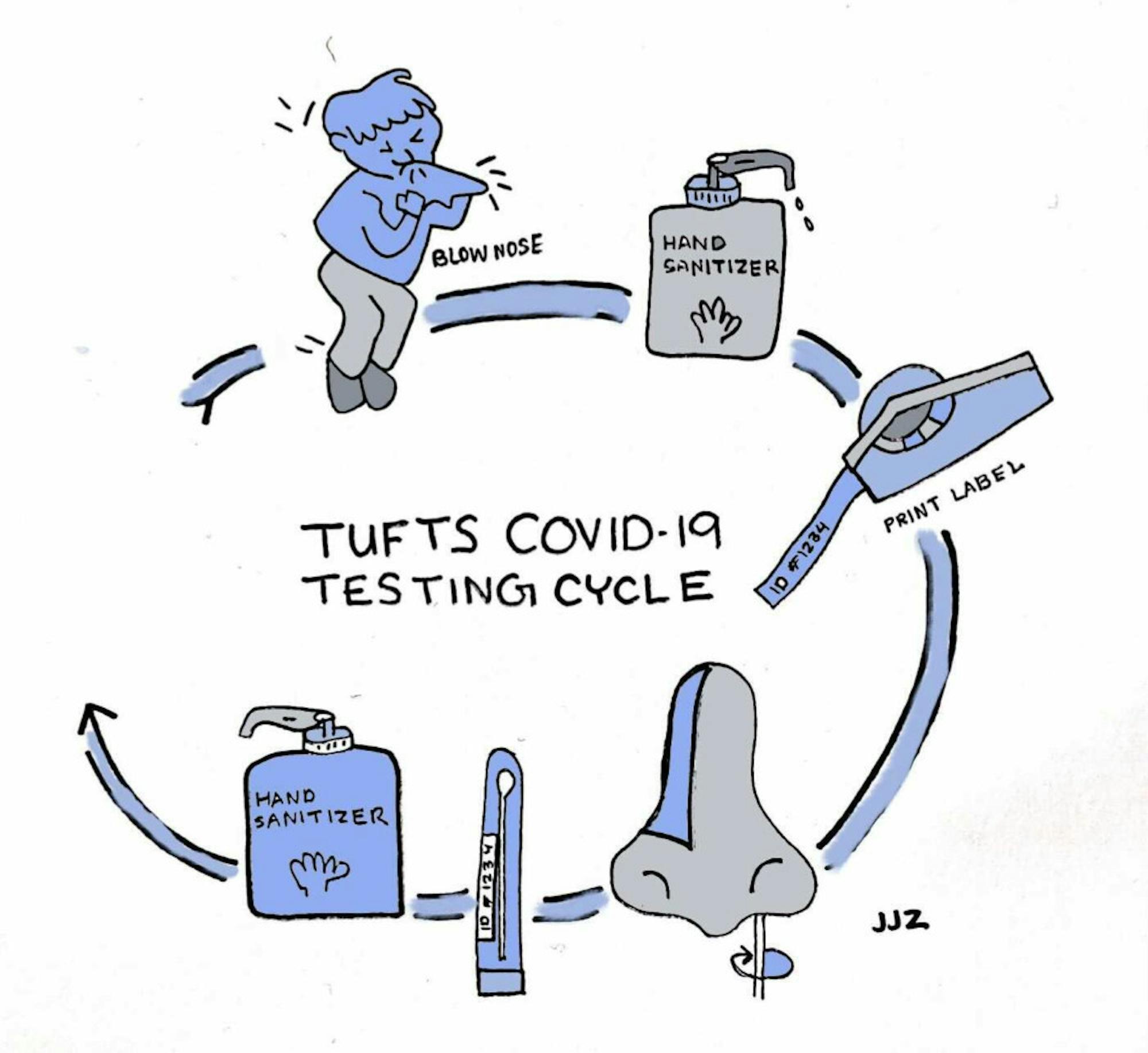When Tufts announced the reopening of campus in June, some community members expressed apprehensions surrounding the efficacy and the safety of Tufts' fall plan; as with most activities during the pandemic, returning to campus came with significant risks. In reflecting upon the past weeks, however, Tufts' commendable job limiting the spread of COVID-19 became evident. Tufts’ semiweekly testing system for students, faculty and "student-facing" staff, comprehensive preventative measures and transparency of testing metrics facilitate this success, as seen in the current0.02% seven-day positivity rate by unique individual.Through Oct. 13, Tufts reported no positive COVID-19 cases in its seven-day total among Medford/Somerville students. For a campus located about six miles from a large city, these rates speak to Tufts’ commitment to preserving its community’s health and well-being.
This commitment clearly extends beyond campus borders with Tufts’ recent decision to provide free COVID-19 tests to neighbors in Medford and Somerville. This effort, in tandem with Tufts’ pilot COVID-19 study of pooled tests for K-12 schools, demonstrates its receptivity to Medford and Somerville residents’ earlier concerns with reopening campus. Although there will always be risks in a pandemic, testing is a necessary step toward protecting our surrounding communities.
We must also acknowledge the importance of students’ compliance with social distancing and testing requirements on campus. By testing on time, wearing masks and social distancing, students fulfill their responsibility to keep themselves and others healthy.
With no reported cases in its seven-day total among Medford/Somerville students, Tufts fares much better than its peer universities with hybrid learning. At the similarly suburban Boston College, for example, 18 individuals tested positive between Oct. 12 and 18. Additionally, Tufts currently reports a 0.02% seven-day positivity per individual, while Boston College's most recent account gives a much higher statistic of 0.16%. The comparably sized Villanova University provides concern as well; it invoked limited testing procedures for the fall semester and contributed a 0.30% positivity rate this past week.
In comparison to its neighboring communities, Tufts' statistics prove notably commendable; Somerville reported 0.39% positivity in the last two weeks, and Boston had a 4.4% positivity rate through Oct. 10. Despite its close proximity to these communities, Tufts’ low rates demonstrate its ability to successfully contain the spread of COVID-19.
With its extensive preventative measures and realistic risk evaluation, Tufts provides a clear example that a community can effectively control the pandemic. This standard of diligence is possible and must extend beyond Tufts’ campus to other universities in the Boston Area. Other hybrid universities must follow Tufts’ lead by more strictly enforcing guidelines and enacting more comprehensive testing programs of community members directly and indirectly affiliated with the university. It is the moral duty of reopened schools to take all measures possible to protect the health of their communities.
Regardless of Tufts’ immediate success, the impending winter and flu seasons may jeopardize the safety of our campus; as the semester progresses, students and administrators must remain committed to keeping our campus healthy. Indeed, robust testing is not a final solution. Students should not use their negative results and young age as an excuse to engage in unsafe activities, and Tufts administrators should not use our current success to assume our invincibility. By continuing these essential efforts to limit the spread of COVID-19, Tufts can preserve the health and wellbeing of its own community and beyond.






